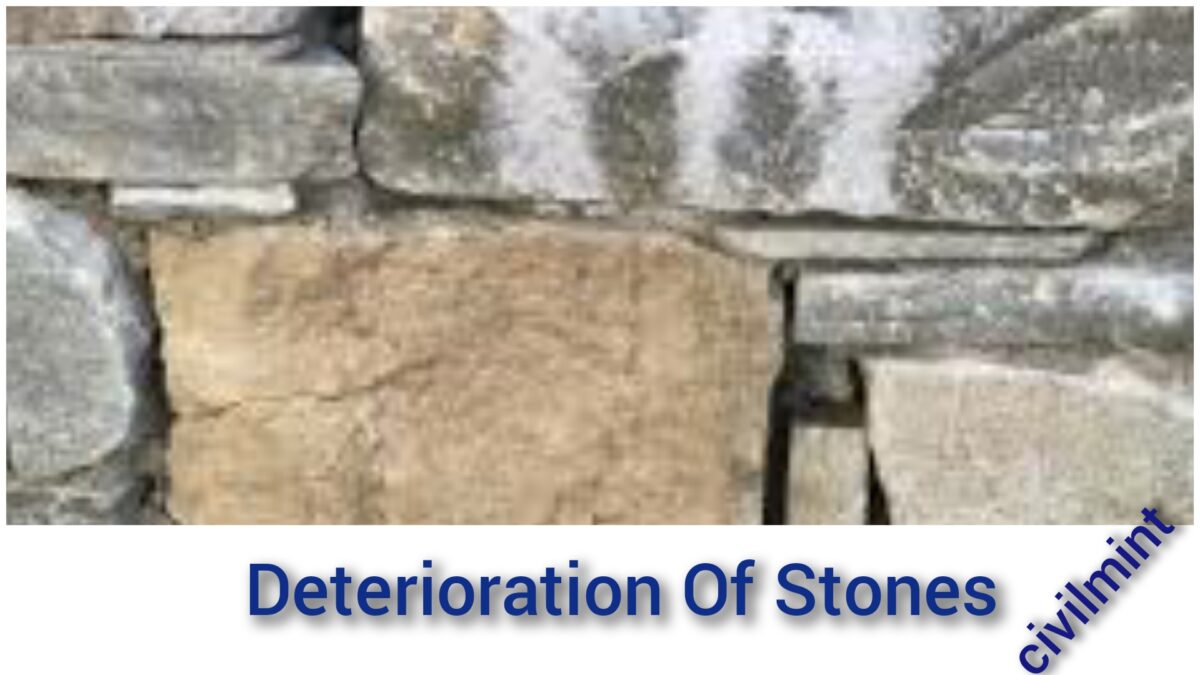Table of Contents
Definition
Stones deterioration means that over time, natural or artificial stone can start to change and break down. This can happen because of things like the weather, pollution, or animals growing on it. When this happens, the stone can become weaker, less pretty, and might eventually fall apart.
Process
Stone deterioration is a term used to describe the slow and gradual changes that happen to natural or synthetic stone materials over time. These changes can happen due to various reasons such as exposure to harsh environmental conditions, weathering, pollution, biological growth, and mechanical stress.

As the deterioration progresses, it can cause the stone to lose its strength, structural integrity, and beauty. If not managed effectively, it can eventually lead to the complete failure of a stone structure or monument.
We should closely monitor and manage stone deterioration to ensure the preservation of stone buildings and monuments in the long run. Doing so will help maintain their aesthetic appeal and prevent any potential structural hazards that may arise.
Causes Of Stone Deterioration
1. Weathering:
Exposure to natural elements highly effects stones. There are various elements such a wind, rain, and temperature fluctuations can cause physical and chemical breakdown of the stone surface.
2. Acid rain:
Acid rain can easily deteriorate upper surface of the stone.
3. Biological growth:
Growth of biological elements like mosses, lichens, and other organic growth can penetrate the pores of the stone and cause structural damage.
4. Salt damage:
Salt crystallization and salt weathering can cause disintegration of the stone surface.
5. Freeze-thaw cycles:
Repeated cycles of freezing and thawing can cause the stone to expand and contract, leading to cracking and weakening.
6. Pollution:
Air conditioning sulfur dioxide and nitrogen oxides can accelerate stone deterioration.
7. Chemical:
Various types of chemicals are used fo clean stones. These chemicals harm the upper surface of stone.
8. Wrong Cleaning:
Bad cleaning techniques can damage stone. Excessive pressure or abrasive cleaning can cause physical damage to the stone.
9. Poor installation:
Poor Installation also produce stress in the stone. It hamper durability of stone.
10. Structural settlement:
When foundation settles, it cause the stone to shift and crack.
11. Earthquakes:
High intensity earthquake can can break stones. Sometimes only cracks occur.
12. Impact damage:
Physical impact from also cause damage to the stone.
13. Vandalism:
Vandalism is the intentional damage to the stone. It causes cracking, chipping, or other forms of deterioration.
14. Moisture intrusion:
water penetration can cause structural damage and promote biological growth.
15. Corrosion of metal components:
Metal fixtures attached to the stone can become stained and weakened due to rusting or other forms of corrosion.
16. Differential movement:
The stone and adjacent materials can crack and deteriorate due to different rates of expansion or contraction.
17. Poor maintenance:
Failing to perform regular maintenance can speed up the deterioration process by enabling the buildup of dirt and other debris.
18. Aging:
Natural elements will naturally deteriorate even well-maintained stone surfaces over time due to exposure
19. Atmospheric deposition:
The accumulation of atmospheric pollutants, especially in urban environments, can accelerate the deterioration of stones.
20. Construction activities:
Vibration from construction activities causes damage to the stone.
I would recommend you to read my article on preservation of stones.
Conclusion
It was all about deterioration of stones and their causes. I hope you liked my article. Thank you for reading.
